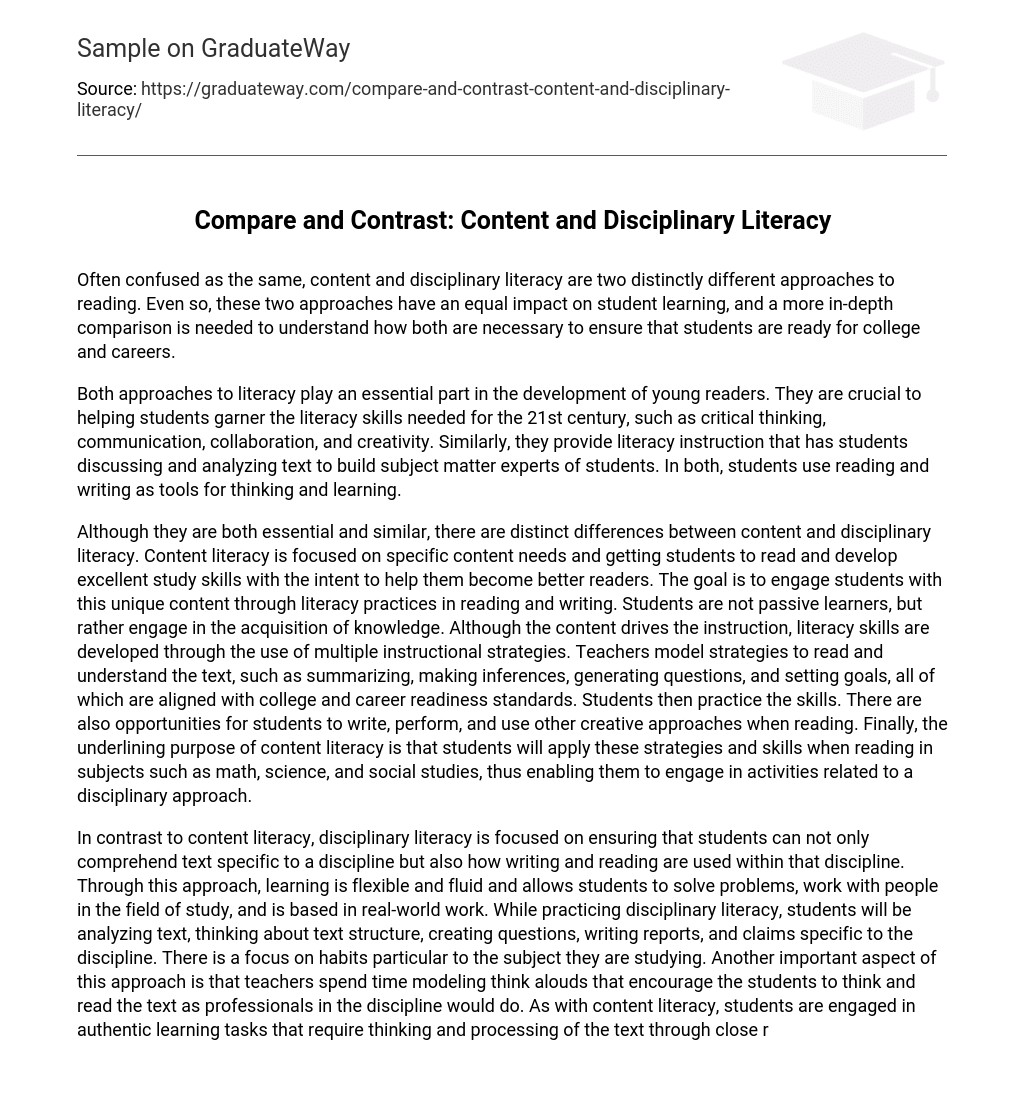Often confused as the same, content and disciplinary literacy are two distinctly different approaches to reading. Even so, these two approaches have an equal impact on student learning, and a more in-depth comparison is needed to understand how both are necessary to ensure that students are ready for college and careers.
Both approaches to literacy play an essential part in the development of young readers. They are crucial to helping students garner the literacy skills needed for the 21st century, such as critical thinking, communication, collaboration, and creativity. Similarly, they provide literacy instruction that has students discussing and analyzing text to build subject matter experts of students. In both, students use reading and writing as tools for thinking and learning.
Although they are both essential and similar, there are distinct differences between content and disciplinary literacy. Content literacy is focused on specific content needs and getting students to read and develop excellent study skills with the intent to help them become better readers. The goal is to engage students with this unique content through literacy practices in reading and writing. Students are not passive learners, but rather engage in the acquisition of knowledge. Although the content drives the instruction, literacy skills are developed through the use of multiple instructional strategies. Teachers model strategies to read and understand the text, such as summarizing, making inferences, generating questions, and setting goals, all of which are aligned with college and career readiness standards. Students then practice the skills. There are also opportunities for students to write, perform, and use other creative approaches when reading. Finally, the underlining purpose of content literacy is that students will apply these strategies and skills when reading in subjects such as math, science, and social studies, thus enabling them to engage in activities related to a disciplinary approach.
In contrast to content literacy, disciplinary literacy is focused on ensuring that students can not only comprehend text specific to a discipline but also how writing and reading are used within that discipline. Through this approach, learning is flexible and fluid and allows students to solve problems, work with people in the field of study, and is based in real-world work. While practicing disciplinary literacy, students will be analyzing text, thinking about text structure, creating questions, writing reports, and claims specific to the discipline. There is a focus on habits particular to the subject they are studying. Another important aspect of this approach is that teachers spend time modeling think alouds that encourage the students to think and read the text as professionals in the discipline would do. As with content literacy, students are engaged in authentic learning tasks that require thinking and processing of the text through close reads. They are continually applying strategies learned, such as writing, speaking, listening, and inquiring.
When considering the most effective evidence-based methods for teaching children, both content and disciplinary literacy should be utilized to ensure that our students are meeting the requirements of the 21st century. Educators are tasked with ensuring that students are learning to read and write, as well as reading and writing to learn. By equipping students with the ability to interpret and use information for authentic purposes, students’ successes will increase.





